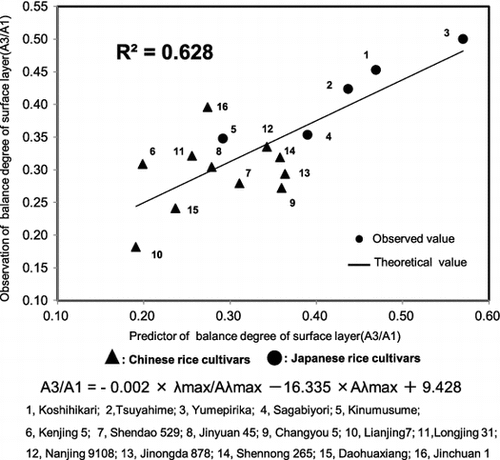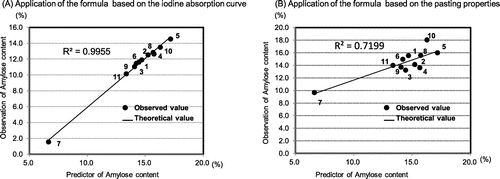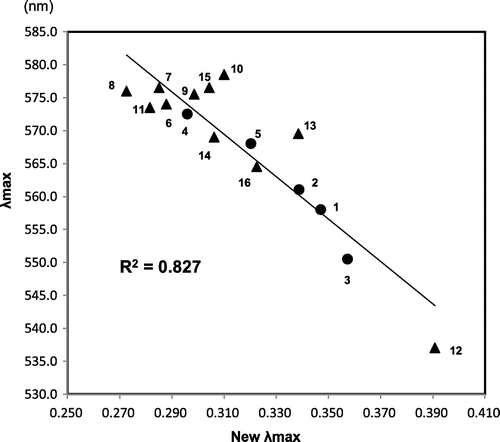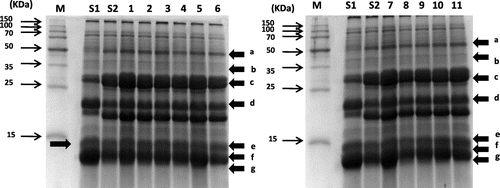Figures & data

Table 1. Analysis of iodine absorption curve, amylose content, and main chemical components of milled rice.
Fig. 1. Validation test of the formula for estimating AAC in Chinese rice cultivars.

Table 2. Pasting properties of Chines and Japanese rice cultivars.
Table 3. The physical properties of the cooked rice grains.
Table 4. Correlation between physical parameters of cooked rice with analysis of iodine absorption curve, amylose contents, RS contents, pasting properties, and main chemical components of 16 Chinese and Japanese rice varieties.
Fig. 2. The starch structure was expressed as a linear function based on the relationship between λmax and “New λmax.”

Fig. 3. Formula for estimating the balance degree of the surface layer (A3/A1) based on the iodine absorption curve of milled rice.

Fig. 4. SDS–PAGE analysis of proteins extracted from raw milled rice grains.

